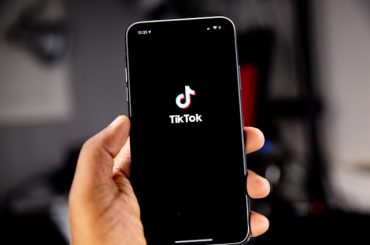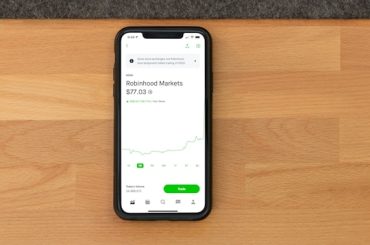Before we dive deep into the SWOT analysis, let us get the business overview of Proctor & Gamble (P&G). Procter & Gamble (P&G) is a multinational consumer goods corporation headquartered in Cincinnati, Ohio, United States.
Established in 1837 by William Procter and James Gamble, the Company has grown into a leading global provider of various consumer products, operating across several segments, including beauty, grooming, health care, fabric and home care, and baby, feminine, and family care.
Business Segments:
- Beauty: P&G offers a diverse range of products in this segment, including skincare, hair care, and cosmetics. Key brands in this segment are Pantene, Head & Shoulders, Olay, and SK-II.
- Grooming: This segment includes shaving and grooming products, both for men and women, under well-known brands such as Gillette, Venus, and Braun.
- Health Care: P&G offers oral care and personal health care products in this segment. Some popular brands include Oral-B, Crest, Vicks, and Metamucil.
- Fabric and Home Care: This segment comprises laundry detergents, fabric enhancers, and home cleaning products. Major brands in this category include Tide, Ariel, Downy, Gain, and Febreze.
- Baby, Feminine, and Family Care: P&G caters to the needs of families with products such as diapers, baby wipes, feminine hygiene products, and paper towels. Key brands in this segment are Pampers, Always, Tampax, and Bounty.
P&G’s global presence and diverse product portfolio have enabled the Company to maintain a strong position in the consumer goods market. The Company is committed to innovation, sustainability, and corporate responsibility, which has led to the development of eco-friendly products and initiatives to reduce environmental impact. P&G’s strategies also include the following:
- Digital transformation.
- Expanding its e-commerce presence.
- Enhancing its supply chain and manufacturing capabilities.
Financial Performance: The Company reported the fiscal year 2022 net sales of $80.2 billion, an increase of five percent versus the prior year. The Company generated an operating cash flow of $16.7 billion with an adjusted free cash flow productivity of 93%.
Here is a SWOT analysis for Proctor & Gamble (P&G):
A SWOT analysis is a strategic planning tool used to evaluate the Strengths, Weaknesses, Opportunities, and Threats of a business, project, or individual. It involves identifying the internal and external factors that can affect a venture’s success or failure and analyzing them to develop a strategic plan. In this article, we do a SWOT Analysis of Proctor & Gamble (P&G).
SWOT Analysis: Meaning, Importance, and Examples
Strengths
- Strong brand portfolio: P&G has a diverse portfolio of well-established and recognizable brands across various consumer goods segments. The Company’s brands, such as Pampers, Tide, Gillette, and Pantene, are household names and enjoy strong consumer loyalty.
- Global presence: P&G operates in over 180 countries and has a well-established distribution network that allows it to cater to consumers worldwide. This extensive reach enables P&G to leverage economies of scale and maintain a strong market presence.
- Research and development: P&G invests heavily in research and development to drive innovation and maintain a competitive edge in the market. The Company is known for introducing new and improved products that cater to changing consumer needs and preferences.
- Marketing and advertising expertise: P&G is renowned for its effective marketing and advertising strategies, which have significantly built brand awareness and customer loyalty. The Company leverages various channels to create a strong brand presence, including traditional media, digital platforms, and in-store promotions.
- Diverse product offerings: P&G’s wide range of products across different categories enables it to cater to a broad consumer base. The Company’s diverse product portfolio also helps to mitigate risks associated with market fluctuations in specific product categories.
- Strong financial performance: P&G has a history of consistent financial performance, with solid revenue and profit growth over the years. The Company’s strong financial position allows it to invest in growth strategies and manage challenges effectively.
- Focus on sustainability and corporate responsibility: P&G is committed to reducing its environmental footprint and has implemented various sustainability initiatives, including eco-friendly product packaging and reducing waste. The Company’s commitment to corporate responsibility also extends to supporting local communities and promoting social causes.
- Skilled workforce: P&G has a talented and diverse workforce, which enables the Company to foster innovation, creativity, and productivity. The Company’s focus on employee development and training helps to retain top talent and maintain a competitive edge in the market.
Weaknesses
- Dependence on mature markets: Much of P&G’s revenue comes from mature markets such as North America and Western Europe. Economic slowdowns or stagnation in these regions can negatively impact the Company’s growth prospects.
- Intense competition: P&G faces fierce competition from other major consumer goods companies like Unilever, Colgate-Palmolive, and Kimberly-Clark. This competition can lead to price wars, eroding profit margins, and market share.
- Brand dilution risk: With a vast portfolio of brands, there is a risk of brand dilution as P&G tries to manage and promote multiple brands across different segments. This can lead to losing focus on individual brands and weakening their competitive position.
- Supply chain disruptions: P&G relies on an extensive global supply chain, making it susceptible to disruptions due to geopolitical tensions, natural disasters, or global pandemics. Such disturbances can impact the Company’s ability to deliver products to consumers and may lead to increased operational costs.
- Limited presence in niche markets: While P&G has a diverse product portfolio, it may lack a strong presence in certain niche markets, such as organic or natural products. This may limit the Company’s ability to capitalize on emerging trends and consumer preferences.
- Regulatory and compliance risks: As a global consumer goods company, P&G must comply with various market regulations and standards. Non-compliance or regulation changes can result in fines, product recalls, or damage to the Company’s reputation.
- Slow response to changing consumer preferences: P&G’s large size and organizational structure may lead to a slower response to changing consumer preferences and market trends. This can make it difficult for the Company to adapt quickly and capitalize on new opportunities.
- The potential negative impact of cost-cutting measures: In an attempt to improve profitability, P&G has implemented cost-cutting measures in the past, which may lead to reduced investment in research and development or marketing efforts. This could potentially weaken the Company’s competitive position over the long term.
Opportunities
- Expanding into emerging markets: P&G can tap into the growth potential of emerging markets such as Asia, Africa, and Latin America, where increasing disposable income and the growing middle-class present opportunities for higher sales of consumer goods.
- Focusing on niche markets and trends: P&G can explore and expand into niche markets such as organic, natural, or eco-friendly products to cater to evolving consumer preferences and capitalize on emerging trends.
- Enhancing digital and e-commerce presence: P&G can invest in expanding its digital and e-commerce presence to reach more customers and leverage the growing trend of online shopping. This can help the Company increase sales and better engage with consumers.
- Strengthening innovation and product development: P&G can continue to invest in research and development to introduce new and innovative products that cater to changing consumer needs and preferences, reinforcing its reputation for quality and innovation.
- Strategic partnerships and collaborations: P&G can form alliances with other companies, startups, or research institutions to collaborate on innovative product development, gain access to new technologies, and expand its market reach.
- Acquisitions and mergers: P&G can pursue strategic acquisitions or mergers with other companies to expand its product portfolio, enter new markets, or strengthen its presence in existing segments.
- Sustainability and corporate responsibility initiatives: P&G can continue to focus on sustainability and corporate responsibility initiatives to enhance its brand image, reduce its environmental impact, and appeal to increasingly environmentally conscious consumers.
- Personalization and customization: P&G can explore opportunities in personalizing and customizing products, allowing consumers to tailor products to their specific needs and preferences, thereby offering added value and differentiation in the market.
- Leveraging data analytics and artificial intelligence (AI): P&G can harness the power of data analytics and AI to gain insights into consumer behavior, optimize marketing strategies, and improve supply chain management, leading to better decision-making and overall efficiency.
- Investing in employee development and talent retention: P&G can continue to invest in employee development, training, and retention programs to maintain a skilled and motivated workforce, which is crucial for driving innovation and maintaining a competitive edge in the market.
Threats
- Intense competition: P&G faces strong competition from other major consumer goods companies like Unilever, Colgate-Palmolive, and Kimberly-Clark, as well as from emerging local and regional players. Increased competition can lead to price wars, reduced market share, and pressure on profit margins.
- Changing consumer preferences: Shifts in consumer preferences, such as increased demand for organic, natural, or eco-friendly products, can pose a threat to P&G’s traditional product lines if the Company is unable to adapt quickly to these changes.
- Economic fluctuations: Economic downturns, recessions, or currency fluctuations can negatively impact consumer spending and demand for P&G’s products, particularly in mature markets where the Company has a significant presence.
- Regulatory and compliance risks: P&G operates in multiple countries and must adhere to various regulations and standards. Changes in regulations, non-compliance, or product recalls can result in fines, reputational damage, or increased operational costs.
- Supply chain disruptions: P&G’s global supply chain exposes the Company to potential disruptions due to geopolitical tensions, natural disasters, pandemics, or trade restrictions. Such disturbances can impact product availability, increase costs, and affect the Company’s ability to meet consumer demand.
- Counterfeit products and brand infringement: The presence of counterfeit products in the market can erode consumer trust in P&G’s brands, lead to lost sales, and damage the Company’s reputation.
- Rising raw material and labor costs: Increases in the cost of raw materials, labor, or other inputs can impact P&G’s profitability if the Company cannot pass these costs on to consumers or find cost-saving measures to offset them.
- Technological disruption: Rapid technological advancements, including digital transformation and e-commerce, can disrupt traditional business models and require P&G to invest heavily in new technologies and capabilities to stay competitive.
- Environmental and social concerns: Growing consumer and regulatory focus on environmental and social issues can pose challenges for P&G if the Company cannot meet evolving expectations related to sustainability, ethical sourcing, and corporate responsibility.
- Loss of key personnel: The departure of key personnel or an inability to attract and retain top talent could impact P&G’s ability to maintain its competitive edge, drive innovation, and execute its growth strategies effectively.









